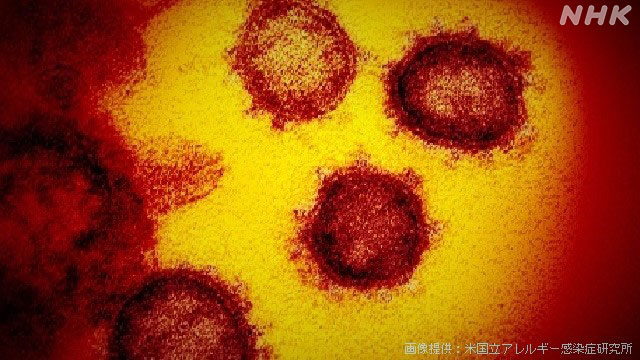The National Center for Global Health and Medicine has created a new index that shows the risk of becoming more severe when infected with the new coronavirus, such as diabetes and shortness of breath.
The higher the score, the more likely it is to become more severe, and it can be used when deciding which patients will be hospitalized with priority.
The National Center for Global Health and Medicine analyzed the characteristics of patients with moderate illness 2 or higher who required oxygen inhalation out of the approximately 4,500 patients who were admitted to hospitals nationwide from June to September last year with the new corona. We have created an index that shows risk factors in terms of points.
The index is divided by age group, and for men aged 40 to 64, 1 point for men, 2 points for obesity with an index "BMI" obtained by dividing weight by the square of height, and 1 point for diabetes. In addition, the symptoms of the new corona are 2 points for fever of 37 degrees 5 minutes or more, 2 points for shortness of breath, 1 point for cough, and 1 point for malaise.
Examining the index with data from the third wave of infection spread, it was found that 23% of patients aged 40 to 64 years with a total score of 5 points, and about 76% with a score of 10 points became severe.
During the epidemic period when the number of patients is increasing rapidly, it is necessary to focus on health observation and be able to be admitted to a medical institution at an early stage because the risk is high if the score is 5 or more.
Fellow Gen Yamada of the National Center for Global Health and Medicine said, "If the infection spreads rapidly and the number of home care recipients increases rapidly, we will use it to efficiently find people at high risk of aggravation and link them to inpatient treatment. I don't want to cover all the risks, but I want you to know it as a guide for understanding your own risks. "
Severity risk index by age
The index of the risk of aggravation when infected with the new corona is divided by age group, and for men aged 18 to 39, 1 point for men, 1 point for those over 30 years old, and weight indicating the degree of obesity. If the index "BMI" divided by the square of is 23 to 29.9, it is 1 point, if it is 30 or more, it is 2 points, cancer is 3 points, and as a symptom of the new corona, fever of 37 degrees 5 minutes or more is 2 points. , If there is a "sounding" that makes a noise when breathing, 2 points are given, and 1 point is given for shortness of breath.
During the epidemic, when the number of patients is increasing rapidly, a total of 6 points or more is considered to be a high risk.
In the case of 40 to 64 years old, 1 point for men, 1 point for 50 to 59 years old, 3 points for 60 to 64 years old, 2 points for obesity with "BMI" of 25 or more, diabetes. In addition to 1 point, the symptoms of the new corona are 2 points for fever of 37 degrees 5 minutes or more, 2 points for shortness of breath, 1 point for cough, and 1 point for malaise.
In the epidemic period when the number of patients increases rapidly, if the score is 5 or more, the risk is high.
For those aged 65 and over, the risk of aggravation is 2 points for those aged 75 and over, 2 points for obesity with a "BMI" of 25 and over, 2 points for those who have had heart failure, and 2 points for diabetes. In addition to 2 points for hypertension and 1 point for cerebrovascular disease, 4 points for fever of 37 degrees 5 minutes or more, 4 points for shortness of breath, and 1 point for cough as symptoms of the new corona.
During the epidemic, when the number of patients is increasing rapidly, if the score is 3 or higher, the risk is high and it is prevented from being overlooked.

